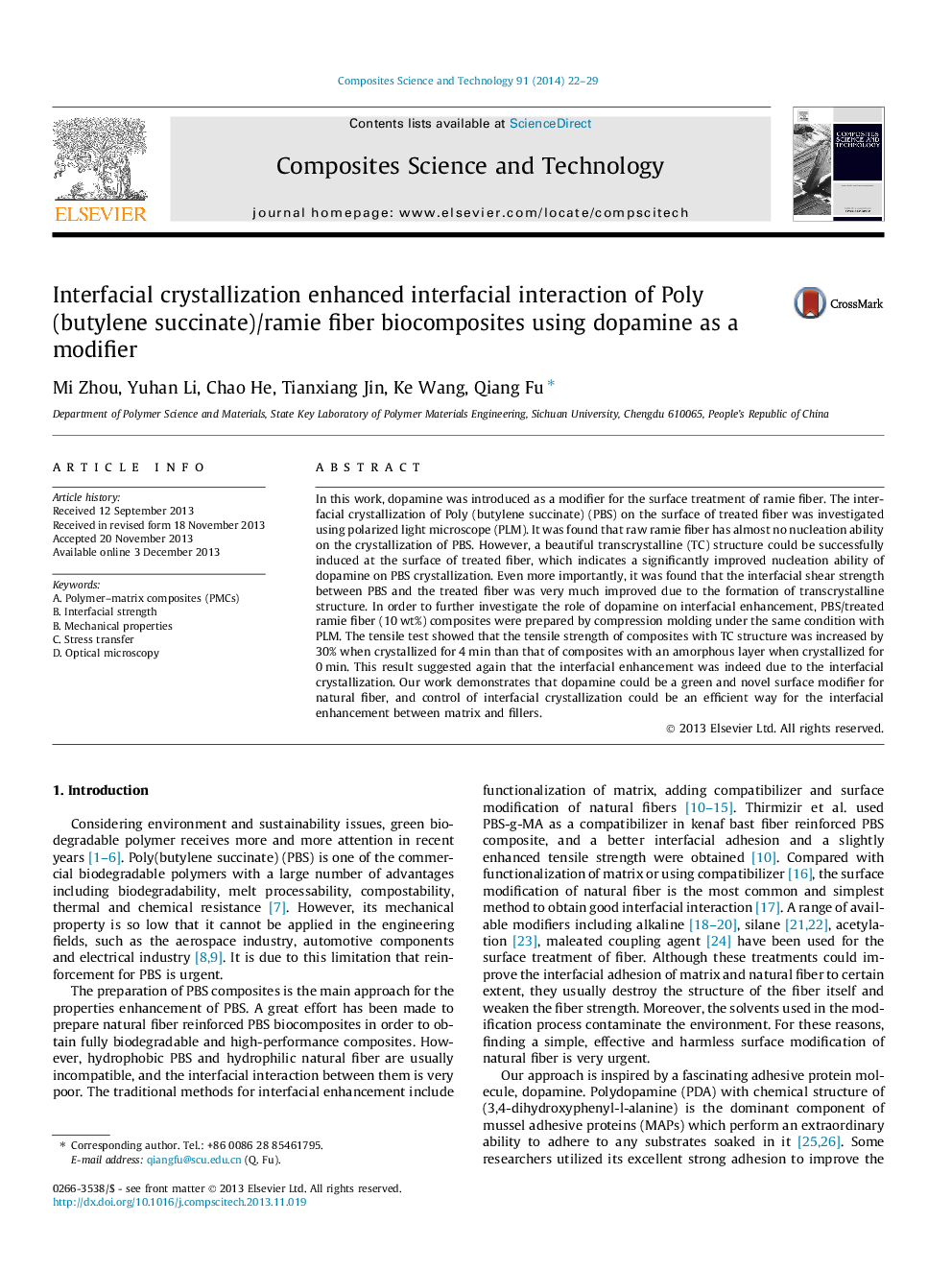| Article ID | Journal | Published Year | Pages | File Type |
|---|---|---|---|---|
| 820389 | Composites Science and Technology | 2014 | 8 Pages |
In this work, dopamine was introduced as a modifier for the surface treatment of ramie fiber. The interfacial crystallization of Poly (butylene succinate) (PBS) on the surface of treated fiber was investigated using polarized light microscope (PLM). It was found that raw ramie fiber has almost no nucleation ability on the crystallization of PBS. However, a beautiful transcrystalline (TC) structure could be successfully induced at the surface of treated fiber, which indicates a significantly improved nucleation ability of dopamine on PBS crystallization. Even more importantly, it was found that the interfacial shear strength between PBS and the treated fiber was very much improved due to the formation of transcrystalline structure. In order to further investigate the role of dopamine on interfacial enhancement, PBS/treated ramie fiber (10 wt%) composites were prepared by compression molding under the same condition with PLM. The tensile test showed that the tensile strength of composites with TC structure was increased by 30% when crystallized for 4 min than that of composites with an amorphous layer when crystallized for 0 min. This result suggested again that the interfacial enhancement was indeed due to the interfacial crystallization. Our work demonstrates that dopamine could be a green and novel surface modifier for natural fiber, and control of interfacial crystallization could be an efficient way for the interfacial enhancement between matrix and fillers.
